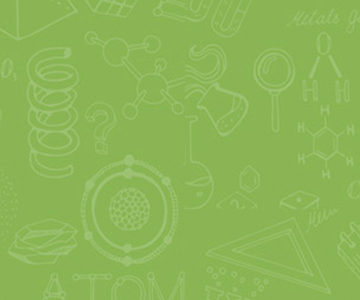In our latest blog series - 'Year Overview' - we help you get familiar with all the key topics your child will learn and the key skills they'll improve in primary and secondary school. Here's a brief overview of Year 5 in English, maths and science with focus areas and main topics.
* Year 5 Overview *
English - Years 5 and 6
Ms Brown - English teacher
During Years 5 and 6 the children will become fluent, accurate and confident readers. They'll be able to compare different books, learn poetry by heart, and prepare and perform readings of various texts aloud. Through their growing reading skills they'll be able to discuss and evaluate how a writer uses language, distinguish fact from opinion and participate in group discussions about texts.
 The children’s spelling will continue to develop and they'll be growing more confident in using a dictionary as well as beginning to use a thesaurus to develop their vocabulary. Their handwriting will now be legible, fluent and they'll write with speed. Their written work will be thoroughly planned and they'll become expert drafters; they'll carefully select their vocabulary choices, describe settings, characters and atmosphere and be able to link their paragraphs to give their writing cohesion. The children will also learn how to use different organisational and presentational devices such as headings, bullet points and subheadings. After completing a draft of writing the children will become used to evaluating and editing what they have done. Their use of grammar will grow in sophistication and they'll be using punctuation such as semi-colons.
The children’s spelling will continue to develop and they'll be growing more confident in using a dictionary as well as beginning to use a thesaurus to develop their vocabulary. Their handwriting will now be legible, fluent and they'll write with speed. Their written work will be thoroughly planned and they'll become expert drafters; they'll carefully select their vocabulary choices, describe settings, characters and atmosphere and be able to link their paragraphs to give their writing cohesion. The children will also learn how to use different organisational and presentational devices such as headings, bullet points and subheadings. After completing a draft of writing the children will become used to evaluating and editing what they have done. Their use of grammar will grow in sophistication and they'll be using punctuation such as semi-colons.
At the end of Year 6 the children will sit national tests in reading and spelling punctuation and grammar while their writing will be assessed by the teachers. These results will assess whether they are at the desired level for Year 7 and will be used by the secondary schools to ensure the children are set appropriate targets.
Maths
Mr Lamberth - Maths teacher
 Children should now be comfortable working with numbers up to one million. They should be able to write, order and round them while fully understanding the value of every digit in the number. They should use known mathematical facts, e.g. times tables, number bonds to 10, etc. to practise manipulating larger numbers in their head and will need to decide from the context of any question whether they need to add or subtract. Their understanding of Roman Numerals will stretch into the thousands allowing them to interpret years from the past. Understanding the make-up of a number takes centre stage too with factors and primes being introduced. Children will also start to become familiar with squaring and cubing numbers and their notation. As they continue working with harder fractions, they'll need to use their knowledge of decimals and percentages and how to convert from one to another to support them. In the world of geometry, children encounter composite shapes, that is to say a shape made up of many rectangles, and will measure, estimate and calculate perimeters and areas. Finally, acute, obtuse and reflex angles are studied and the importance of 360° is uncovered.
Children should now be comfortable working with numbers up to one million. They should be able to write, order and round them while fully understanding the value of every digit in the number. They should use known mathematical facts, e.g. times tables, number bonds to 10, etc. to practise manipulating larger numbers in their head and will need to decide from the context of any question whether they need to add or subtract. Their understanding of Roman Numerals will stretch into the thousands allowing them to interpret years from the past. Understanding the make-up of a number takes centre stage too with factors and primes being introduced. Children will also start to become familiar with squaring and cubing numbers and their notation. As they continue working with harder fractions, they'll need to use their knowledge of decimals and percentages and how to convert from one to another to support them. In the world of geometry, children encounter composite shapes, that is to say a shape made up of many rectangles, and will measure, estimate and calculate perimeters and areas. Finally, acute, obtuse and reflex angles are studied and the importance of 360° is uncovered.
Science
Ms Latham - Science teacher
This year children are encouraged to develop a deeper understanding of primary science. They should encounter more abstract ideas and recognise how these ideas help them to understand and predict how the world operates. Children will describe the differences in the life cycles of a mammal, an amphibian, an insect and a bird, they'll also explain reproduction and changes as humans’ age.
 Children will compare and group materials on the basis of their properties and response to magnets. They should know that some materials will dissolve in liquid, and describe how to recover a substance from a solution. They’ll use their knowledge to decide how mixtures might be separated. They’ll demonstrate that changes of state are sometimes reversible and sometimes not. In ‘Earth and space’ children will describe the movement of the Earth and other planets, relative to the Sun, the movement of the Moon relative to the Earth, and how day and night occur. They should also describe the Sun, Earth and Moon as approximately spherical bodies. In ‘forces’ children will explain how gravity acts between the Earth and a falling object, they'll identify the effects of air resistance, water resistance and friction, and recognise that some mechanisms, including levers, pulleys and gears, allow a smaller force to have a greater effect.
Children will compare and group materials on the basis of their properties and response to magnets. They should know that some materials will dissolve in liquid, and describe how to recover a substance from a solution. They’ll use their knowledge to decide how mixtures might be separated. They’ll demonstrate that changes of state are sometimes reversible and sometimes not. In ‘Earth and space’ children will describe the movement of the Earth and other planets, relative to the Sun, the movement of the Moon relative to the Earth, and how day and night occur. They should also describe the Sun, Earth and Moon as approximately spherical bodies. In ‘forces’ children will explain how gravity acts between the Earth and a falling object, they'll identify the effects of air resistance, water resistance and friction, and recognise that some mechanisms, including levers, pulleys and gears, allow a smaller force to have a greater effect.







